Uncategorized
(10/08/15) SAN FRANCISCO— Today the U.S. Environmental Protection Agency recognized the Sonoma-Marin Saving Water Partnership, the Municipal Water District of Orange County, KB Home, Energy Inspectors Corporation, and 13 other winners as WaterSense Partners of the Year for creating, rebating, communicating and educating consumers about WaterSense labeled products, homes and programs.
EPA Region 9 is working with all levels of government, tribes, and NGOs to expand and scale-up improved and sustainable water management in response to the ongoing severe drought in the Pacific Southwest. This includes identifying tools to build long-term resiliency to future water supply shortfalls with key actions such as assisting water utilities identify and address losses from in their water distribution systems, advancing innovation in wastewater recycling, promoting stormwater capture for non-potable use and to replenish groundwater, and working with industry and consumers to conserve water through efficient fixtures and practices.
“EPA is proud to honor WaterSense partners for making a difference in drought-stricken communities,” said Jared Blumenfeld, EPA’s Administrator for the Pacific Southwest. “Our WaterSense partners are helping build stronger, more resilient water systems to meet the challenges ahead.”
WaterSense announced the 2015 Sustained Excellence Award winners, Partners of the Year, and Excellence Award winners today at the WaterSmart Innovations Conference and Exposition in Las Vegas, Nevada. By working together, these water efficiency leaders and more than 1,700 other WaterSense partners have helped Americans save 1.1 trillion gallons of water and $21.7 billion in water and energy bills since 2006.
2015 WaterSense Partners of the Year:
KB Home, headquartered in Los Angeles, Calif., was recognized with a WaterSense Sustained Excellence Award for its continued work building WaterSense labeled homes, for which it previously earned Builder Partner of the Year for four years. In addition to building nearly 100 WaterSense labeled homes in 2014, KB Home also constructed model homes in California featuring innovative water-efficient products, along with graywater recycling systems that provide water for toilet-flushing or landscape irrigation.
Energy Inspectors Corporation, located in Las Vegas, Nev., was recognized as the Licensed Certification Provider Partner of the Year for certifying 100 WaterSense labeled new homes in 2014 and its continued work with KB Home to build even more communities of WaterSense labeled homes. The company also kept its inspectors’ knowledge current through creation of an online training video on the WaterSense indoor and outdoor criteria for homes.
The Sonoma-Marin Saving Water Partnership was recognized as the Professional Certifying Organization Partner of the Year for its Qualified Water Efficient Landscape (QWEL) professional certification program. In 2014, four more organizations adopted the QWEL program and 200 new irrigation professionals were certified. The partnership also updated and promoted a graywater training module.
The Municipal Water District of Orange County, located in Fountain Valley, Calif., was recognized with an Excellence Award for its Sprinkler Spruce-Up campaign as a platform to promote and educate costumers about WaterSense labeled weather-based irrigation controllers and the importance of “sprucing up” irrigation systems.
EPA’s WaterSense program protects the future of our nation’s water supply by offering people a simple way to use less water with water efficient products, new homes and services. In helping to preserve water resources, the important work of the WaterSense program supports the goals of EPA’s Clean Water Rule. And, because saving water also saves energy, the program supports EPA’s Clean Power Plan, which will help communities save energy and reduce greenhouse gas emissions.
Learn more about the 2015 WaterSense award winners, including more information about the award winners in California and Nevada, at www.epa.gov/watersense.
Uncategorized

NASTT turns 25 in 2015! What was happening 25 years ago?
On October 4, 1990, Fox TV’s “Beverly Hills, 90210” premiered.
On October 6, 1990, US 67th manned space mission STS 41 (Discovery 11) launches into orbit.
On October 9, 1990, Radio stations around world play “Imagine” honoring John Lennon. (October 9 would have been his 50th birthday)
Check in every Friday in 2015 when NASTT posts more facts about 25 years ago…
Uncategorized
LAKE MILLS, Wisc.– Pipe bursting contractors now have 99 tons of pulling force for their 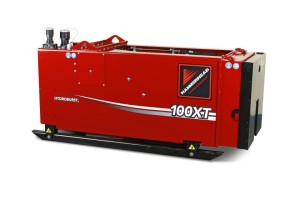 sewer, water and gas line replacement jobs from the new, powerful, compact HydroBurst® 100XT static pipe bursting system from HammerHead Trenchless Equipment. Featuring tethered remote control, the streamlined 100XT pays out rod very quickly due to the pipe industry’s first automated rod spinning assembly and the unique design of its hydraulic cylinders.
sewer, water and gas line replacement jobs from the new, powerful, compact HydroBurst® 100XT static pipe bursting system from HammerHead Trenchless Equipment. Featuring tethered remote control, the streamlined 100XT pays out rod very quickly due to the pipe industry’s first automated rod spinning assembly and the unique design of its hydraulic cylinders.
Alan Goodman is national sales manager for HammerHead Trenchless Equipment ram and burst products. He says that the 100XT might be the only bursting machine some contractors ever need. The unit weighs just 3,200 pounds and is only 39 inches high by 30 inches wide.
“It has the muscle to replace pipes up to 16 inches in diameter,” Goodman said, “yet is compact enough they won’t mind using it for pipes as small as 4 inches.”
The pulling machine’s water-cooled PP4500 hydraulic powerpack with 72.7 hp Kubota engine pumps hydraulic fluid at up to 43.5 gpm and 4,500 psi. In 50-ton mode the unit directs all hydraulic fluid to just two of the cylinders, which then can move twice as fast as in 100-ton mode.
Although some jobs will require access to the machine’s 100-ton capacity, Goodman said, jobs that require 50 tons of pullback or less mean the actual pipe burst will also be done that much faster.
Pull rod used by the 100XT is the same lightweight 2.5-inch, API-threaded rods used by other models. The spinner assembly incorporated on its carriage is rated to 250 foot-pounds. The spinner allows rod to be fed from behind. As the unit is pushing during payout, rod can be added without stopping the machine. The result is that as the unit is pushing during payout, rod can be made up, or tightened, simultaneously.
Putting the 100XT operator on the surface with remote control frees up workspace in the pit for the rod handler, permits the best view for more efficient control of the operation and also enhances overall worksite safety. Lever-actuated controls on the puller itself facilitate initial training and orientation at the machine and provide redundant backup, ensuring job completion if for any reason the remote control cannot be used.
As static pipe bursting specialist for HammerHead Trenchless Equipment, Mark Maxwell helps to train operators on the machine. Maxwell said, “The new unit is so user-friendly and its operating manual so clear that the customer is comfortable using the remote after a little guided instruction from me.” Maxwell said D&D Sewer and Water, a contractor based in Canton, Michigan, who specializes in pipe bursting, was instrumental in the final design. “We asked D&D to rigorously and thoroughly test it in the field,” Maxwell said. “Basically, ‘Go beat this thing up.’ But it failed to fail.”
The HydroBurst 100XT is available from HammerHead Trenchless Equipment or from authorized dealers, worldwide. Authorized dealers can be found on the web at www.hammerheadtrenchless.com or by calling 800.331.6653. (International: + [1] 920.648.4848).
Uncategorized
On July 22, 2015, a 3.5 m (11.5 ft) Robbins Main Beam TBM began a new chapter in its 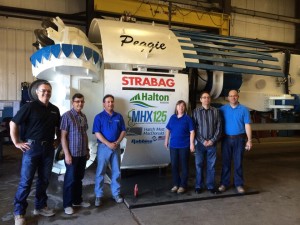 storied 32-year career. Originally built for the Terror Lake project in Alaska, the veteran machine has been used all over the world, most recently in Hong Kong. Including its new 6.3 km (4.0 mi) long tunnel for the Mid-Halton Outfall in Ontario, Canada, the machine will have bored nearly 30 km (18.6 mi) of tunnels since 1983.
storied 32-year career. Originally built for the Terror Lake project in Alaska, the veteran machine has been used all over the world, most recently in Hong Kong. Including its new 6.3 km (4.0 mi) long tunnel for the Mid-Halton Outfall in Ontario, Canada, the machine will have bored nearly 30 km (18.6 mi) of tunnels since 1983.
The machine’s latest endeavor will not be without challenges. The rebuilt TBM has been beefed up for high-capacity tunneling in hard rock. Geology is expected to consist of laminated shale with interbedded limestone and siltstone layers and a maximum rock strength of 120 MPa UCS. “We have kept this a simple, streamlined Main Beam machine, but we modified the cutterhead with larger muck buckets, so material can be moved through it faster,” explained Robbins Project Manager Lynne Stanziale. In addition the TBM was outfitted with fully modernized VFDs, electronics, and high-capacity gearing and motors. The back-up system was also modified to make it more mobile through two 130 m (427 ft) radius curves that the TBM will have to navigate, one in each direction.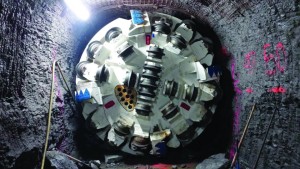
“The concept of using refurbished TBMs bears great opportunities for value-for-money constructors,” said Christian Zoller, Commercial Project Manager for contractor STRABAG. “Our TBM ‘Peggie’ is evidence of that–when well-maintained and professionally refurbished, the lifespan of these machines is extensive. We’re pleased to see that our client Halton Region has the forward-oriented mindset that allows STRABAG to provide its renowned high level of skill and quality, paired with the good value for money that a refurbished TBM yields.”
Contractor STRABAG, who has had several projects in Canada including the epic Niagara Tunnel project, is in charge of the works. In addition to the tunnel, STRABAG had to construct two deep shafts for the launch and exit of the TBM. The scheme involves two sections of tunnel designed to carry treated effluent water from a treatment plant in Oakville into Lake Ontario. The completed system will upgrade water treatment capacity in the Halton Region of Ontario.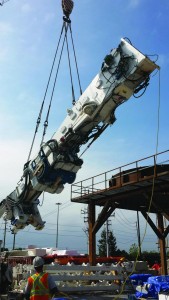
The TBM was launched from a 12 m (39 ft) diameter, 62 m (203 ft) deep shaft and is ramping up production, having excavated over 300 m by early September 2015. “An ongoing challenge associated with the tunneling on this project is the requirement to drive the TBM downhill for the first 4 km (2.5 mi) of the tunnel. Keeping the water that infiltrates the tunnel from flowing directly to the cutterhead requires significant effort,” said Terry McNulty, Technical Project Manager for STRABAG.
Management of water inflows is not the only challenge. A portion of the drive will curve to run directly under Lake Ontario for 2.1 km (1.3 mi), though the tunnel is deep enough that it will remain in bedrock. Once the machine has completed its final bore under Lake Ontario, it will be backed out of the blind heading and removed from an 8.0 m (26 ft) diameter shaft in a local park.
“We can already see the potential performance that this TBM will have, once fully assembled and tested. We look forward to the continued support and cooperation with our partner Robbins on this endeavor,” said Zoller. Though the TBM has only recently started up, crews are moving forward with a plan to line the tunnel with mesh panels and ring beams if necessary. A cast-in-place liner will follow on after tunneling is completed in August 2017.
Photo Information:
Photo 1: Officials from the Mid-Halton Region visit the hard-working Robbins Main Beam, nicknamed “Peggie” in the Solon, Ohio, USA manufacturing facility. Photo Credit: Michelle Hill, NASTT.
Photo 2: The Robbins Main Beam TBM has been in service since 1983, and with its new project for the Mid-Halton Outfall, it will have bored nearly 30 km (18.6 mi) of tunnels.
Photo 3: Contractor Strabag lowers the main beam of the Robbins TBM into the 62 m (203 ft) deep launch shaft.
Contact Information:
Desiree Willis
Technical Writer
Email: willisd@robbinstbm.com
Direct: 253.872.4490
29100 Hall Street
Solon, OH 44139 USA
Uncategorized
Release Date: 10/01/2015
Contact Information: Peter Cassell, cassell.peter@epa.gov, 312-886-6234
CHICAGO — The U.S Environmental Protection Agency today announced that Central Michigan University in Mt. Pleasant, Michigan, has received a $10 million Great Lakes Restoration Initiative grant to monitor coastal wetlands around the Great Lakes basin over the next five years. This project expands an existing GLRI grant to the university for Great Lakes wetlands monitoring.
“This new Great Lakes Restoration Initiative grant will expand coastal wetland monitoring around the Great Lakes basin,” U.S. EPA Regional Administrator/Great Lakes National Program Manager Susan Hedman said. “The information collected by Central Michigan researchers will be used to assess ecosystem health and to prioritize areas for habitat protection and restoration.”
“Michigan is home to over 3,100 miles of Great Lakes shoreline,” said U.S. Sen. Debbie Stabenow. “This investment will help Central Michigan University researchers study coastal wetlands across the Great Lakes basin to help restore and protect fish and wildlife habitats for years to come. Today’s announcement further underscores the importance of partnerships like the Great Lakes Restoration Initiative, which invests in the health of our Great Lakes and waterways.”
“The Great Lakes are a critical component of Michigan’s economy, and wetland areas in particular help improve water quality and support local wildlife,” said U.S. Sen. Gary Peters. “Central Michigan University is well-equipped to implement this coastal wetland monitoring program, which will help us better protect and restore wetland areas throughout our Great Lakes. This grant underscores the importance of the Great Lakes Restoration Initiative as a tool for revitalizing the health of the world’s largest system of fresh surface water.”
“Congratulations to Central Michigan University on being awarded this grant,” U.S. Rep. John R. Moolenaar said. “The Great Lakes are vital to our state and the $7 billion economy they support. This GLRI research will play a valuable role in protecting them for future generations.”
Central Michigan University will continue to implement a basin-wide coastal wetland monitoring program over the next five years while simultaneously evaluating ongoing and future wetlands restoration efforts. Fish, invertebrate, bird, amphibian, and plant communities, along with chemical and physical variables, will be assessed in the majority of coastal wetland areas throughout the Great Lakes basin. The data and the results will be used to prevent further wetland degradation and loss through future wetland protection.
“Over 50 percent of all Great Lakes coastal wetlands have been lost to development at this point and we are just now beginning to understand how important these systems are to the overall Great Lakes ecosystem and our economy,” CMU Institute for Great Lakes Research Director Dr. Don Uzarski said. “They filter toxicants before reaching the open water of the lakes and serve as nursery habitats for sport fishes to name just a couple of services that these systems provide. Our project spans the entire basin including US and Canada covering over 10,000 miles of shoreline. Of course, CMU cannot do this work alone. Our team represents most of the top scientists in the field of Great Lakes coastal wetland ecology and extends across the entire basin representing nine universities, one state agency, one Canadian federal agency, and one U.S. federal agency beyond EPA.”
Other institutions and agencies collaborating with CMU on this grant include University of Minnesota-Duluth, University of Wisconsin campuses of Green Bay and River Falls, Lake Superior State University, University of Notre Dame, Grand Valley State University, University of Windsor, State University of New York at Brockport, Michigan Department of Environmental Quality, U.S. Geological Survey, Environment Canada, and Bird Studies Canada.
The Great Lakes Restoration Initiative was launched in 2010 to accelerate efforts to protect and restore the largest system of fresh surface water in the world. Great Lakes Restoration Initiative resources are used to strategically target the biggest threats to the Great Lakes ecosystem.
Information about the Great Lakes Restoration Initiative is available at: http://www.glri.us/.
More information about the Great Lakes Restoration Initiative funding is available at: http://www2.epa.gov/great-lakes-funding/great-lakes-restoration-initiative-glri.
Uncategorized
Crew wins use of a Vermeer D24x40 S3 Navigator® HDD for one year
PELLA, Iowa — The judges’ votes are in. B&T Drainage Inc. from Marshall, Illinois, has been named the winner of the Ultimate Crew contest, sponsored by Vermeer. B&T Drainage bested three other crews during today’s Ultimate Crew Underground Showdown, a live drilling competition held at the International Construction and Utility Equipment Exposition (ICUEE) 2015 in Louisville, Kentucky.
named the winner of the Ultimate Crew contest, sponsored by Vermeer. B&T Drainage bested three other crews during today’s Ultimate Crew Underground Showdown, a live drilling competition held at the International Construction and Utility Equipment Exposition (ICUEE) 2015 in Louisville, Kentucky.
A panel of judges scored each team based on time to complete the bore, accuracy, safety procedures and teamwork. The crew’s efforts earned the grand prize — the use of a new Vermeer D24x40 S3 Navigator horizontal directional drill for one year.
B&T Drainage Inc. is a family business that was founded by Allen Boyer in 1981. Today, Allen’s sons, John, Scott and Steve, run the business along with John’s sons, Chase and Colby. There are currently three generations and 10 family members involved. When asked about the “T” in the company’s name, the family says it stands for team. B&T relies heavily on teamwork to perform superior work safely and efficiently.
“We’d like to thank Vermeer for giving us this opportunity. We had so much fun coming to ICUEE and participating in the Underground Showdown,” said John Boyer. “I believe that we won today because we came in with a plan and worked well together as a team. Now, we can’t wait to get home and try out our new drill!”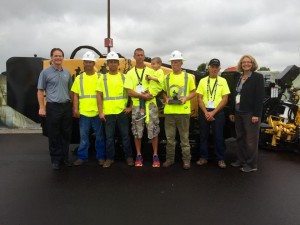
Later this year, the crew will be featured in Vermeer advertising running in key underground publications. In addition, they will participate in a “Behind the Job”Web series. Each episode will focus on the challenges faced on HDD jobsites, how the crew works together to complete a job, as well as how they are using technology to succeed and stay productive. The Web series will be hosted on NavigatorNation.com and YouTube.
Vermeer congratulates all the finalists who competed in the Underground Showdown: Martin Hildreth Company Inc., from Rockwell City, Iowa; Precision Underground Inc., from Bismarck, North Dakota; and Tru Tek Drilling, from Conneaut Lake, Pennsylvania.
“The Ultimate Crew contest is a true testament to the talented individuals in the underground industry who build the infrastructure that powers our daily activities,” said Jean Kaul, marketing manager – underground, at Vermeer. “We witnessed some of the best crews in North America compete head-to-head today. We are grateful for their hard work, competitive spirit and loyalty to our industry — and our brand.”
Coverage of the Ultimate Crew Underground Showdown and ICUEE 2015 are available at www.vermeericuee.com.
Vermeer, the Vermeer logo, Equipped to Do More and Navigator are trademarks of Vermeer Manufacturing Company in the U.S. and/or other countries.
© 2015 Vermeer Corporation
All Rights Reserved.
Please send all reader inquiries to:
Vermeer Corporation
P.O. Box 200
Pella, Iowa 50219
+1-641-628-3141







